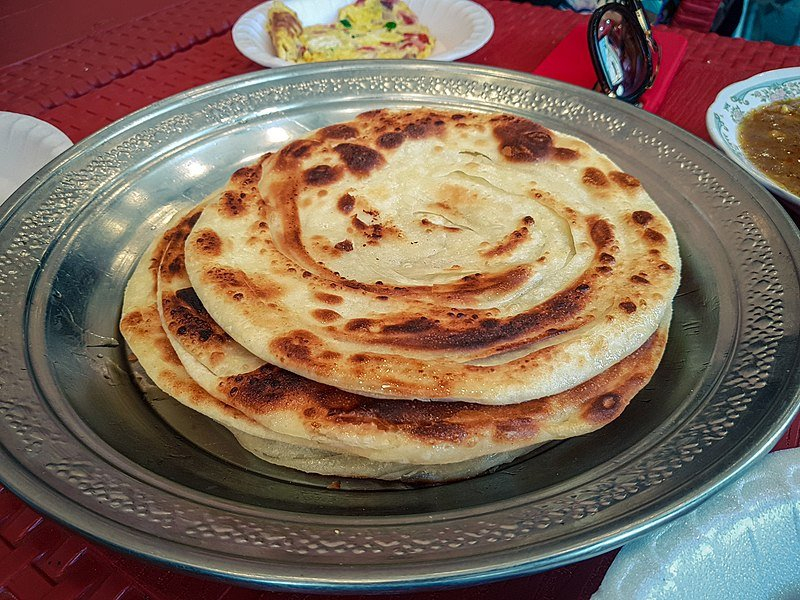Paratha

Paratha, a popular flatbread in the Indian subcontinent, has a long and storied history that dates back centuries. Its birth can be traced to the Indian subcontinent, where it has evolved into a diverse and beloved culinary tradition.
The term "paratha" is derived from the amalgamation of two Hindi words: "parat," meaning layers, and "atta," meaning dough. This name aptly describes the unique characteristic of parathas—layers of dough created through a specific process of rolling and folding. The earliest forms of parathas were likely simple, unleavened bread made from whole wheat flour.
Parathas are often associated with North Indian cuisine, particularly in regions like Punjab, where they became a staple food due to their versatility and satiety. They could be stuffed with various fillings, from vegetables to minced meat, enhancing their taste and nutritional value.
Today, parathas come in numerous regional variations and fillings, including aloo paratha (potato-filled), gobi paratha (cauliflower-filled), and paneer paratha (cottage cheese-filled), to name a few. They are enjoyed throughout the Indian subcontinent and have gained international recognition.
Parathas are not only a delicious and fulfilling food but also a cultural symbol of shared meals and hospitality. Whether served with pickles, yogurt, chutneys, or a side of vegetables, they remain a cherished part of Indian cuisine, carrying the history and evolution of a culinary tradition that spans centuries.














